By George M. Nipe, Jr.
On the morning of July 12, 1943, a climactic engagement of the Battle of Kursk was about to take place. The last fortified elevation on the road leading to the key town of Prokhorovka, designated as Hill 252.2, had been taken by the German 1st SS Panzergrenadier Division “Leibstandarte” after ferocious fighting on the previous day. The blasted, smoldering hill was occupied by the division’s half-track battalion, commanded by SS Standartenführer (Colonel) Jochen Peiper.
Although the distance from the hill to the edge of Prokhorovka was just three kilometers, the Leibstandarte’s advance was halted because its flanks were exposed. On the right,
the 2nd SS Panzergrenadier Division “Das Reich” had been occupied turning over sections of its front to the 167th Infantry Division and did not advance. To the left, there was an undefended five-kilometer-wide gap between Leibstandarte’s western flank and the town of Wassiljewka, which was on the southern bank of the Psel River. Wassiljewka was held by a reinforced panzergrenadier battalion of the 3rd SS Panzergrenadier Division “Totenkopf.”
Operating in the gap between the two divisions were elements of a Soviet tank brigade that posed a constant threat to the single dirt road that was Leibstandarte’s main supply route. Leibstandarte commander General Theodor Wisch sent his Aufklarüngsabteilung (reconnaissance battalion) into
the gap, but the battalion’s light armored cars and half-tracks could not take on Russian tanks in a pitched battle. In spite of this potentially dangerous situation, the commander of the II SS Panzer Corps, SS Obergruppenführer (Lt. Gen.) Paul Hausser, intended to attack and capture Prokhorovka on July 12.
Hausser and chief of staff Werner Ostendorff planned to assault Soviet forces defending Prokhorovka from three sides. The most important role in the attack was assigned to Totenkopf, commanded by SS Brigadeführer (Brig. Gen.) Hermann Priess. At first light, the 100 tanks of Totenkopf’s panzer regiment would cross the Psel River west of Wassiljewka, then push six kilometers northeastward to the Karteschewka-Prokhorovka road. This road extended across the width of the Psel River bend, from Karteschewka on the west to the village of Petrowka, which was five kilometers northwest of Prokhorovka.
Having crossed the Psel River at that point, Totenkopf’s panzers could strike into the rear of the Soviet troops defending Prokhorovka, as well as eliminate a key Soviet artillery position. The subsequent destabilization of the Soviet defensive position would signal the beginning of the second phase of Hausser’s attack, which was to be carried out by Leibstandarte’s panzers. Commanded by SS Obersturmbannführer (Lt. Col.) Georg Schönberger, the panzer group included Leibstandarte’s tank battalion, the half-track battalion, and various support vehicles. Taking advantage of the expected disruptive effects of Totenkopf’s attack, Schönberger was to attack Prokhorovka from the west.
In the next phase of the attack, Das Reich’s Regiment “Deutschland” was to smash through the Soviet front southwest of Prokhorovka. When Regiment Deutschland penetrated the Soviet defensive position, Das Reich’s panzer group, stationed two kilometers behind the front at the village of Oserowskij, was to strike through the gap, then turn south and roll up the Russian line parallel to the division’s front. This attack was intended to seize forward positions from which to attack Prokhorovka from the south.
Hausser’s plan of attack emphasized mobility and surprise in order to attack the Soviet forces defending Prokhorovka. It was a classic German panzer operation featuring sequential assaults upon Prokhorovka from the north, south, and west. The plan was a good one and would probably have worked if Prokhorovka had been defended only by the exhausted Soviet infantry and combat-weakened tank brigades that the German juggernaut had decimated in seven days of battle.
However, unknown to Hausser and Fourth Panzer Army commander Col. Gen. Hermann Hoth, the plan would be upset by the arrival of strong formations from the Soviet strategic reserve. The 5th Guards Army’s 33rd Rifle Corps with three rifle divisions and Lt. Gen. P.A. Rotmistrov’s 5th Guards Tank Army arrived throughout July 11. The 5th Guards Tank Army, assembled in and around Prokhorovka, possessed about 590 tanks and would be supported by more than 200 tanks of the 2nd and 2nd Guards Tank Corps. The II SS Panzer Corps records show that the three SS divisions possessed 232 operational tanks on the morning of July 12, 1943.
In spite of postwar German officers’ claims to the contrary, no doubt due to embarrassment, these very substantial Soviet forces had arrived completely undetected by German intelligence or air reconnaissance. There is no mention of any unit of Rotmistrov’s army, the 33rd Rifle Corps, or the observation of large movements of Soviet armor in the intelligence records of either the II SS Panzer Corps or the Fourth Panzer Army before the battle.
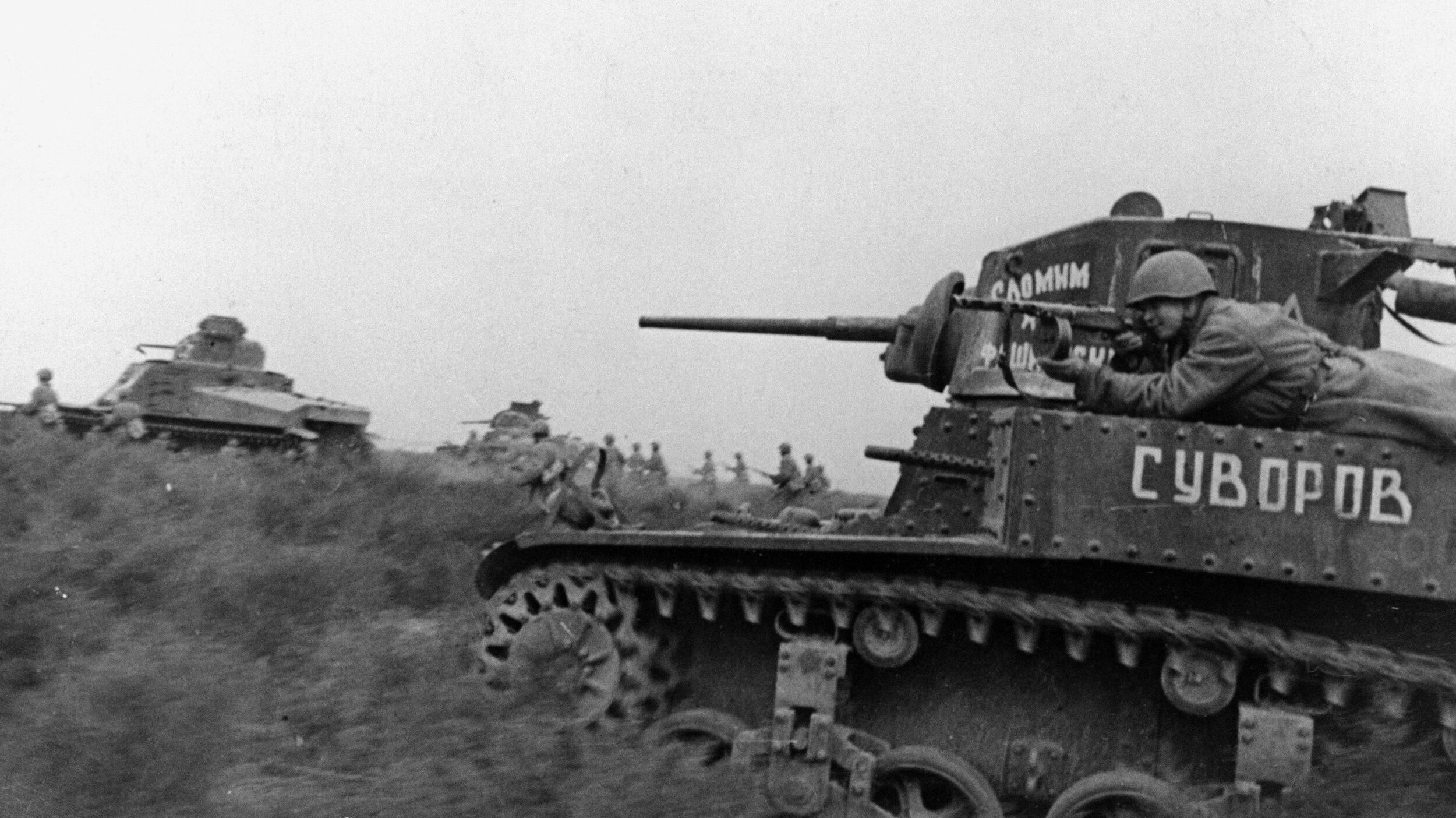
Rotmistrov intended to launch a powerful frontal attack with the 18th and 29th Tank Corps against Leibstandarte and elements of Totenkopf. He planned to attack Das Reich with the attached 2nd and 2nd Guards Tank Corps. Rotmistrov held the powerful Guards Mechanized Corps, equipped with 212 tanks, in reserve. The 29th and 18th Tank Corps were to advance from Prokhorovka through a five- kilometer-wide corridor that extended to the southwest from Prokhorovka. The corridor was bordered by the Psel River on the northwest and a 30-foot-high railroad embankment to the southeast. During the night, as the Russian tanks assembled, the roar of great numbers of tank motors was heard by German forward observers, and the corps records mention this fact, but no one could say what the motor noise meant.
Early on the morning of July 12, all uncertainty was removed.
Major General I.F. Kirichenko’s 29th Tank Corps attacked through the southern half of the corridor with all three brigades of his corps on line—a total of about 170 T-34s and T-70s. The 31st and 32nd Tank Brigades, with perhaps 120 tanks, converged upon Hill 252.2. South of the rail embankment, the 55 tanks of Kirichenko’s 25th Tank Brigade, supported by the 169th Tank Brigade, charged toward Leibstandarte’s 1st SS Panzergrenadier Regiment. Kirichenko kept none of his armor in reserve, gambling that he would overwhelm the German defenders in the first wave.
Major General B.S. Bakharov’s 18th Tank Corps advanced through the northern half of the Psel corridor on Kirichenko’s right. The more than 60 tanks of the 181st Tank Brigade, commanded by Lt. Col. V.A. Puzyrev, headed directly toward Wassiljewka. The 60 tanks of the 170th Tank Brigade, commanded by Lt. Col. V.D. Tarasov, were on Puzyrev’s left, and passed north of Hill 252.2. Bakharov held his 110th Tank Brigade and the 36th Heavy Tank Regiment in reserve. To the south, the 2nd and 2nd Guards Tank Corps roared from their assembly areas toward Das Reich’s positions with perhaps 200 tanks between them.
When the attack began, the commander of the only German tanks near Hill 252.2, Rudolf von Ribbentrop, was asleep.
Obersturmführer (First Lieutenant) von Ribbentrop, the commander of Leibstandarte’s 6th Panzer Company, did not have to be in Russia in 1943. He was the son of German Foreign Minister Joachim von Ribbentrop, and since he had three years of combat experience by the summer of 1943, he undoubtedly could have obtained a soft military post in Germany. However, Ribbentrop chose to fight with his comrades, in a division that was always at the hottest spots on the Eastern Front. On July 12, he experienced combat so terrible and violent that he would feel born again to have survived the inferno.
When the 5th Guards Tank Army began its attack, Ribbentrop’s 6th Company, with only seven operational Panzer IVs, was in reserve a short distance west of Hill 252.2. The other companies of the panzer battalion were dispersed farther to the west in the direction of the Oktjabriskij State Farm. It was expected that it would take hours before Totenkopf’s panzers could reach the Karteschewka highway, strike down its length, cross the river, and then attack Prokhorovka from the rear. Many of the Leibstandarte tankers were fast asleep, even though the rumble of heavy guns could already be heard in the distance. By 8 am, artillery boomed from the north, announcing that Totenkopf was about to begin its drive toward the Karteschewka highway.
Signs of unusual activity developed along the front to the east. Overhead, flights of Soviet fighters were seen winging westward, escorting squadrons of Ilyushin IL-2 Sturmovik ground attack planes. Luftwaffe fighters closed at high speed from all directions, and tracers floated lazily upward from German flak batteries. Machine-gun fire rattled all along the front lines, and the volume of artillery fire from both sides grew heavier in the first hours of daylight.
While Ribbentrop slept, five brigades of Russian tanks were racing into the Psel River corridor at full speed, bouncing over ditches, hillocks, and hedges. Rotmistrov mistakenly believed that the SS divisions possessed scores of heavy Tiger tanks and ordered his tankers to close with the SS panzers at top speed and fire upon them from point-blank range. This meant that the Russian fire was wildly inaccurate because, unlike modern tanks, neither German nor Russian tanks had mechanisms to keep the barrels level while moving. Rotmistrov’s order was a tactical mistake that needlessly caused the loss of hundreds of Russian tanks and their crews. In fact, Leibstandarte had only four operational Tigers on July 12, and Das Reich had only one. Totenkopf’s 10 Tigers were all on their way across the Psel River when the Soviet attack spilled out of the corridor.
Ribbentrop was startled from his sleep by a messenger who told him that he had been summoned to battalion headquarters. SS Sturmbannführer (Major) Martin Gross explained that there were numerous reports from forward infantry positions of loud motor noises coming from the east. Gross ordered Ribbentrop to go forward to the panzergrenadier battalion command post to see if he could determine what was happening. Ribbentrop commandeered a motorcycle and rode to a railroad underpass that provided shelter for the battalion headquarters. He discovered that there were no new reports, and he returned to his company.
Heinz Trautmann, the loader of Ribbentrop’s tank crew, offered Ribbentrop coffee and hot food. While he had been gone, the 19-year-old gunner, Kurt Hoppe, had filled every nook and cranny inside the tank with cannon shells. The radio and bow machine gunner was 18-year-old Harry Berger. Walter Schüle, Ribbentrop’s driver, had the reputation of being the best tank driver in the entire battalion.
As he raised his coffee cup, Ribbentrop looked to the east and was so startled that he could hardly believe his eyes. Along the entire division front, purple smoke shells were soaring into the air. Purple smoke meant enemy tanks. Ribbentrop dropped his coffee and leaped into his tank as Schüle gunned the motor. Ribbentrop radioed his platoon leader, SS Untersturmführer (2nd Lieutenant) Walter Malchow, instructing him to cover the left flank of the company. The tank motors roared as Ribbentrop led his company of seven Panzer IVs up the slope of Hill 252.2.
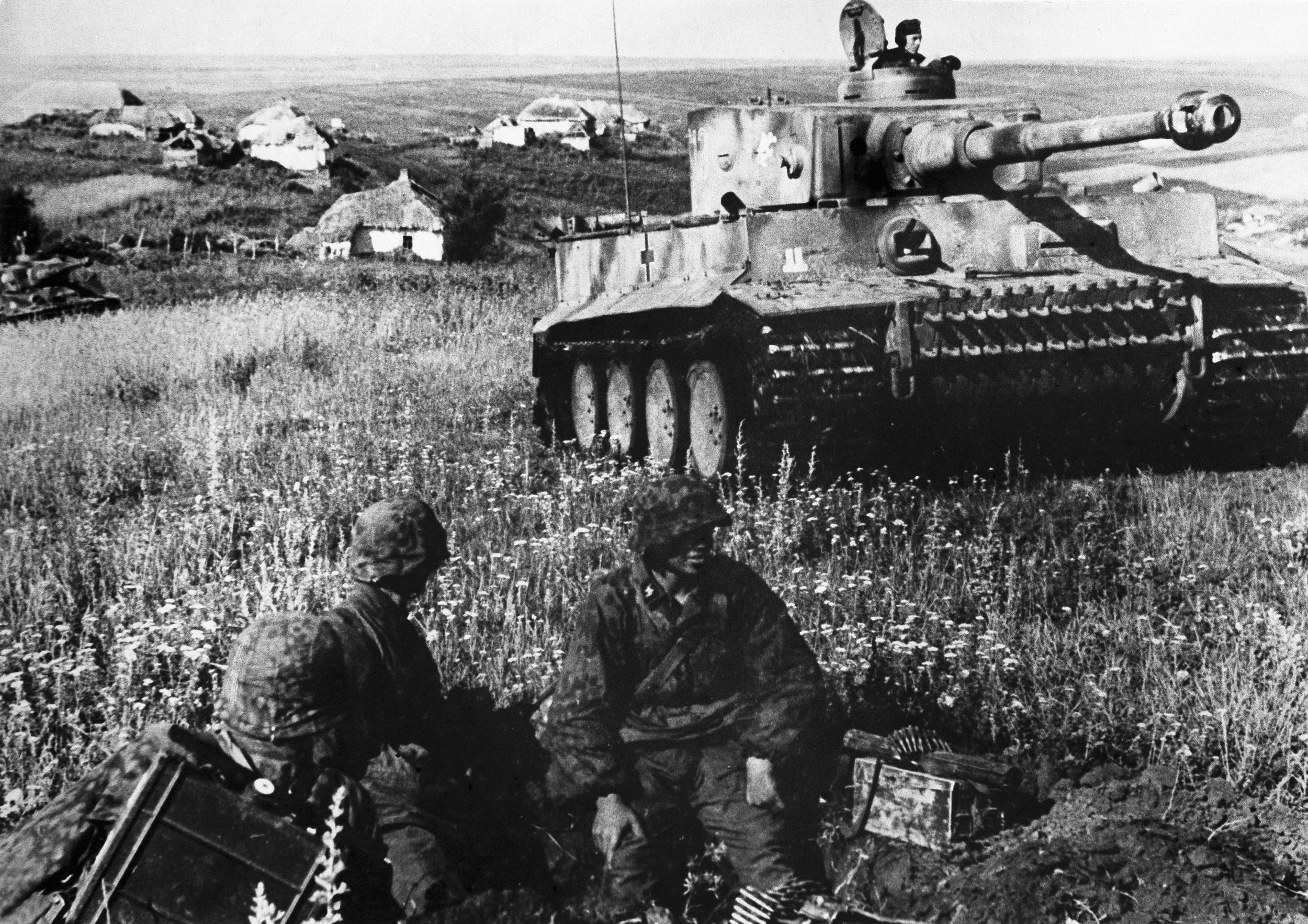
When the company moved over the crest of the hill, T-34s could be seen moving through the corridor to the north at a range of 800 to 1,000 meters. The panzers halted and opened fire, scoring hits on the Russian tanks at that distance. When Ribbentrop looked forward once again, he was shocked by what he saw. Barely 200 meters in front of him appeared 15 Russian tanks, then 30, and finally the entire 31st Tank Brigade burst into sight. Another group of 60 or more tanks, belonging to the 32nd Tank Brigade, was also racing toward the hill.
Deciding that their only chance for survival was to move and act aggressively, Ribbentrop ordered the company to open fire. Firing, then maneuvering, the seven Panzer IVs started down the hillside. A speeding Russian tank swerved to a halt 100 meters in front of Ribbentrop, the T-34 rocking on its suspension. The Russian tank commander was so completely engrossed in rotating the turret to get the German tank in his sights that he failed to simply turn his tank into position to fire. Gunner Hoppe had just fired the tank’s cannon, and Trautmann did not have another round loaded yet. To gain a few vital seconds for Hoppe to acquire this new target, Ribbentrop ordered Schule to first drive past the Russian tank and then turn to face the T-34. Schule was already changing gears to move the Panzer IV forward before the order came. The panzer passed the T-34 at a distance of only a few meters while the Russian commander frantically tried to turn his turret fast enough to get the German tank in his sights. He was a second too late!
As soon as the Panzer IV’s gun came to bear on the T-34, Hoppe pressed the electric firing button. The tank rocked backward from the recoil of the gun, and the 75mm shell instantaneously penetrated the armor of the Russian tank. A second later the T-34’s ammunition detonated in a thunderous explosion, blowing the entire turret off its mounting ring. The turret whirled into the air, then slammed into the ground, narrowly missing the front of the Panzer IV. Ribbentrop ordered Schüle to move forward while he selected another target for his gunner.
During the first few minutes of the fight, Ribbentrop’s tank managed to avoid being hit due to the cool actions of the crew, but not all of the company was so fortunate. Two Panzer IVs were hit during the initial exchange of fire and burst into flames. Platoon commander Malchow’s panzer knocked out two Russian tanks before his tank was hit. A sudden, stunning impact jolted his tank and the engine failed. The driver could not restart it, and noxious fumes filled the interior of the tank. Malchow’s gunner continued to fire at Russian tanks as they raced past, putting five more out of action. Suddenly, the smoldering engine caught fire and smoke billowed into the tank.
Malchow ordered his crew to bail out only seconds before the tank exploded. The five men leaped into a nearby ditch as Soviet tanks carrying Russian infantry sped by them on either side. The Russian tanks all seemed to be heading down the reverse slope toward the tank ditch that had been part of the Soviet defensive system that Leibstandarte had crossed on July 11.
The T-34s continued to race westward at full speed, apparently unaware that the deep tank ditch lay in front of them. At the last second, some of the T-34 drivers saw the danger and tried to turn, often swerving into the path of a following tank. Others hurtled over the edge and smashed into the bottom of the ditch. Since most Russian tanks did not have radios, there was no way for the Soviet tank commanders to warn their comrades following behind them. Smoke from burning tanks and clouds of dust thrown up by churning tracks hid the single narrow passage that SS pioneers (engineers) had blasted through the ditch. Unable to find a crossing, the T-34s milled around on the reverse slope while Peiper’s grenadiers began to attack them with magnetic antitank mines or improvised explosive charges.
In the midst of the maelstrom, Ribbentrop’s tank moved constantly, firing on Soviet tanks as it moved toward German lines. At one point Ribbentrop’s Panzer IV overtook a group of Russian infantry who were unaware that a German tank was behind them. The tank ran straight through the screaming men, crushing some underneath the grinding tracks and cutting down others with machine-gun fire. The terrified survivors dove into ditches or disappeared behind burning tanks.
Hoppe knocked out a dozen or more T-34s while following them from behind as Schüle maneuvered behind knocked-out Russian tanks or hid in dense clouds of smoke. Ribbentrop had just ordered Schüle to turn the tank toward the German lines and safety when disaster struck. Hoppe had just knocked out a 14th T-34 when a Russian shell struck the sight aperture and drove the mechanism into his face. With his gunner bleeding and unconscious and the gun sight inoperable, Ribbentrop abandoned all stealth and raced toward the German lines.
Miraculously, the tank reached safety. Ribbentrop waved down an orderly passing by on a motorcycle and shouted to the man to have a tank and new gunner brought forward. Incredibly, Ribbentrop intended to return to the battle on the hill, but before he could do so he was ordered to rejoin the battalion for a counterattack against the hill. Incredible as it may seem, three of the company’s seven tanks survived the battle.
At first glance it seems miraculous that any of Ribbentrop’s tanks could possibly have survived. However, Ribbentrop was convinced that he owed his survival to an inefficient Soviet crew configuration and an inexplicable lack of communications capability. In the summer of 1943, Soviet tanks had only a two-man turret crew, consisting of a loader and the tank commander who also had to serve as the gunner. In the heat of battle, the tank commander had to acquire targets, turn the turret, and aim and fire the gun. Therefore, Russian tank commanders had no opportunity to observe terrain, detect threats from the flank and rear, or direct the tanks under his command. For a Russian tank commander to observe the battle around him, he had to leave his gun, stand in the copula, and open the hatch to look around. This left his gun unattended and the tank defenseless. Faced with that choice, the Russian tank commanders stayed at their cannons with the turret hatch firmly closed. All they could see was the image visible through the gun sight.
In contrast, all German tanks of the period had a three-man turret crew, consisting of a gunner, loader, and vehicle commander. The sole responsibility of the tank commander was to direct the crew of the tank in combat. He could guide the driver, take advantage of terrain features, scan 360 degrees for threats (or opportunities), and choose targets for the gunner. By means of a throat microphone the tank commander was able communicate with each member of his crew. Every tank commander could also communicate with any other tank by use of a shortwave radio.
Russian tanks did not have the same communication ability because the only tanks that were normally equipped with radios were those of battalion and sometimes company commanders. Thus, once engaged in battle, Russian tank unit commanders could not communicate with the tanks under their command. This was a critical failing because the efficient conduct of modern tank warfare is not possible without instant communications between small-unit leaders and the individual tanks under their command. Lacking this ability, Soviet tank units were unable to react to the ever-changing events of battle in a coordinated fashion, especially in battles of movement.
By the time Ribbentrop and his crew reached safety, the 1st SS Panzergrenadier Regiment had repulsed attacks of the 29th Tank Corps’ 25th Tank Brigade and the 169th Tank Brigade, inflicting heavy losses upon the Russian tanks. After suffering losses from the 88mm guns of Totenkopf’s flak battalion and attacks by German Ju-87 Stuka dive bombers, the 18th Tank Corps’ 181st and 170 Tank Brigades pulled back from Wassiljewka. The two tank corps then turned south, intending to attack Leibstandarte’s exposed flank near Oktjabriskij State Farm.
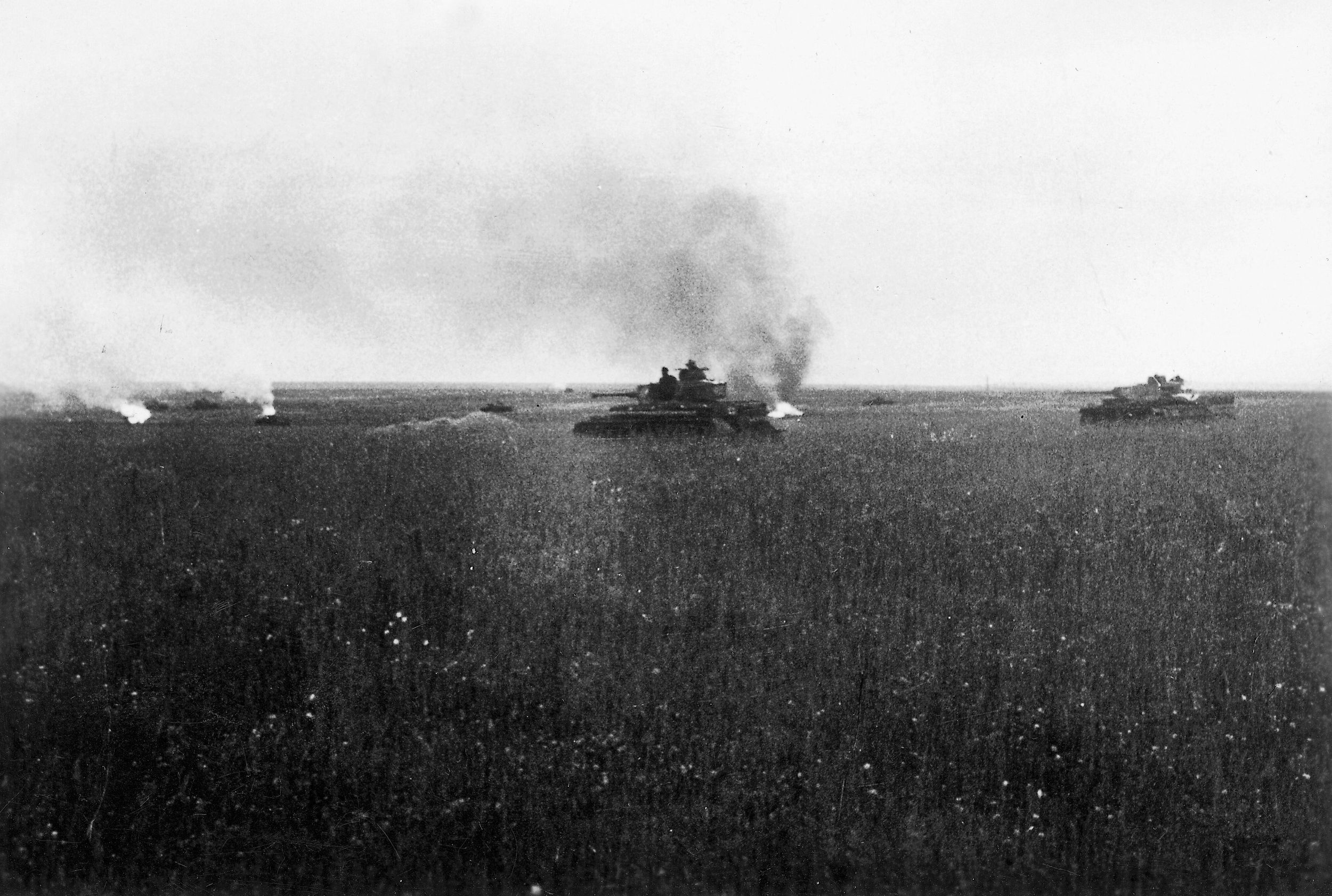
Leibstandarte’s panzer battalion was by then fully involved in the counterattack upon Hill 252.2 and could not disengage. Panzer regiment commander Schönberger ordered his Tiger company to block the Soviet attack. The four remaining operational Tigers rumbled into the path of the approaching Soviet tank brigades. Untersturmführer Michael Wittmann was temporarily in command of the company because regular company commander Heinz Kling had been seriously wounded the day before.
Far to the north, the Soviet T-34s and T-70s could be seen approaching at high speed and firing rapidly. In any event, even at short range the 76.2mm Russian shell could not penetrate the frontal armor of a Tiger. Unfortunately for the Russians, the 88mm guns of the Tigers could reach out and inflict death and destruction at ranges beyond 2,000 meters.
Immediately, the Tigers began to kill T-34s and T-70s as the high-velocity 88mm shells penetrated the Soviet armor with ease. Columns of black, greasy smoke climbed into the sky, marking the spots where Russian tanks burned. The Tigers knocked out more than 30 Russian tanks before the survivors recoiled to the east and were drawn into the cauldron around Hill 252.2. During the fighting, the tank of Lt. Col. V.D. Tarasov, commander of the 170th Tank Brigade, was knocked out and Tarasov himself was killed.
While the fighting raged on Hill 252.2 and in the corridor, the 2nd and 2nd Guards Tank Corps had attacked Das Reich’s defensive positions south of Prokhorovka. Unfortunately for the Russian tankers, the division possessed an unusually large number of 50mm and 75mm antitank guns. Dozens of Russian tanks were knocked out by concealed German batteries. The few tanks that penetrated the SS lines had no infantry support and were easy victims for tank killer squads. However, late in the day, a group of about 25 T-34s pushed past the town of Kalinin and approached Oserowskij.
Das Reich’s panzers ambushed the Soviet tanks, destroying almost all of them. The Panzer IV commanded by 20-year-old Untersturmführer Hans Mennel knocked out six T-34s during the engagement. Mennel’s feat, mentioned in corps dispatches, almost singlehandedly blunted the Soviet thrust. Das Reich’s panzer battalion did not lose a single tank during the engagement, its only combat of the day.
Totenkopf’s panzer regiment was not so fortunate. After crossing the Psel River, it then advanced northward toward the Karteschewka-Prokhorovka road. Instead of encountering exhausted Russian infantry belonging to the battered 52nd Guards Rifle Division, Bochmann’s panzers found fresh troops of the 33rd Guards Rifle Corps’ 95th and 42nd Guards Rifle Divisions dug in along successive defensive lines. The Soviet defenses were studded with antitank guns and entrenched tanks supported by batteries of heavy artillery and rockets. The panzer group fought its way through to the Karteschewka road shortly before midnight. However, this success cost Bochmann more than 40 tanks, mostly due to fire from camouflaged Russian antitank guns and artillery.
After dark, recognizing the danger posed by Totenkopf’s armor, Rotmistrov dispatched the 24th Guards Tank Brigade and the 10th Guards Mechanized Brigade to block the road leading to Petrowka. The 18th and 29th Tank Corps, battered but not destroyed, pulled back into defensive positions in the Psel River valley east of Wassiljewka.
Although the SS divisions had knocked out hundreds of Russian tanks, the Soviets had not even committed all their reserves. The Germans, on the other hand, had no reserves left to throw into the battle since Hitler had decided to abandon Operation Citadel, his offensive against the Kursk salient. The Soviet armor remaining in the corridor threatened to capture the bridges at Wassiljewka and isolate Totenkopf’s panzer group on the north bank of the river. It was a danger Hausser could not risk. On the following day, he ordered division commander Priess to pull his tanks back to the southern bank of the river.
When the fighting ended on the evening of July 12, scores of Russian tanks were left smoldering in Leibstandarte’s sector between the Psel River and the railroad embankment. According to Soviet accounts, the 18th and 29th Tank Corps had only 200 operational tanks on July 13, which meant that these two corps alone had lost approximately 160 tanks. In addition, the 2nd and 2nd Guards Tank Corps, already weakened in previous fighting, were decimated in the fighting against Das Reich.
The SS divisions claimed so many destroyed tanks that Fourth Panzer Army headquarters was skeptical and issued a directive regarding the counting of knocked-out enemy tanks. Following this implied rebuke, corps commander Hausser came to Hill 252.2 and inspected the battlefield personally. He counted 93 Russian tanks knocked out just in the vicinity of Hill 252.2; he marked each with a piece of chalk to arrive at an exact figure.
In contrast, Leibstandarte had lost only 17 Panzers, a ratio of nine Russian tanks lost for every German tank knocked out, but the division had spent its last mental and physical strength during the horrific fighting on July 12. Seven consecutive days of combat, fatigue, horrific heat, and heavy casualties (especially among irreplaceable small-unit leaders) had exhausted the division. The following day, after a desultory advance, Wisch pulled his panzers back behind Hill 252.2. The division did not attempt any further offensive operations during Operation Citadel.
Ribbentrop’s extraordinary combat leadership was recognized by division commander Wisch with a prompt recommendation for the Knight’s Cross. The award was speedily approved and presented to the tank commander on July 15, 1943. Approval for the Knight’s Cross normally took many months, if not longer. Typically modest, Ribbentrop used the occasion to recognize the skill of his crew as the major factor in his success. Ribbentrop survived the war, as did his driver Walter Schüle, and in the late 1990s they gathered as many survivors of the company as possible in order to put their remembrances of July 12, 1943, on paper so that their experiences would not be lost.
Harrisonburg, Virginia, resident George M. Nipe, Jr., is the author of Decision in the Ukraine, Summer 1943.
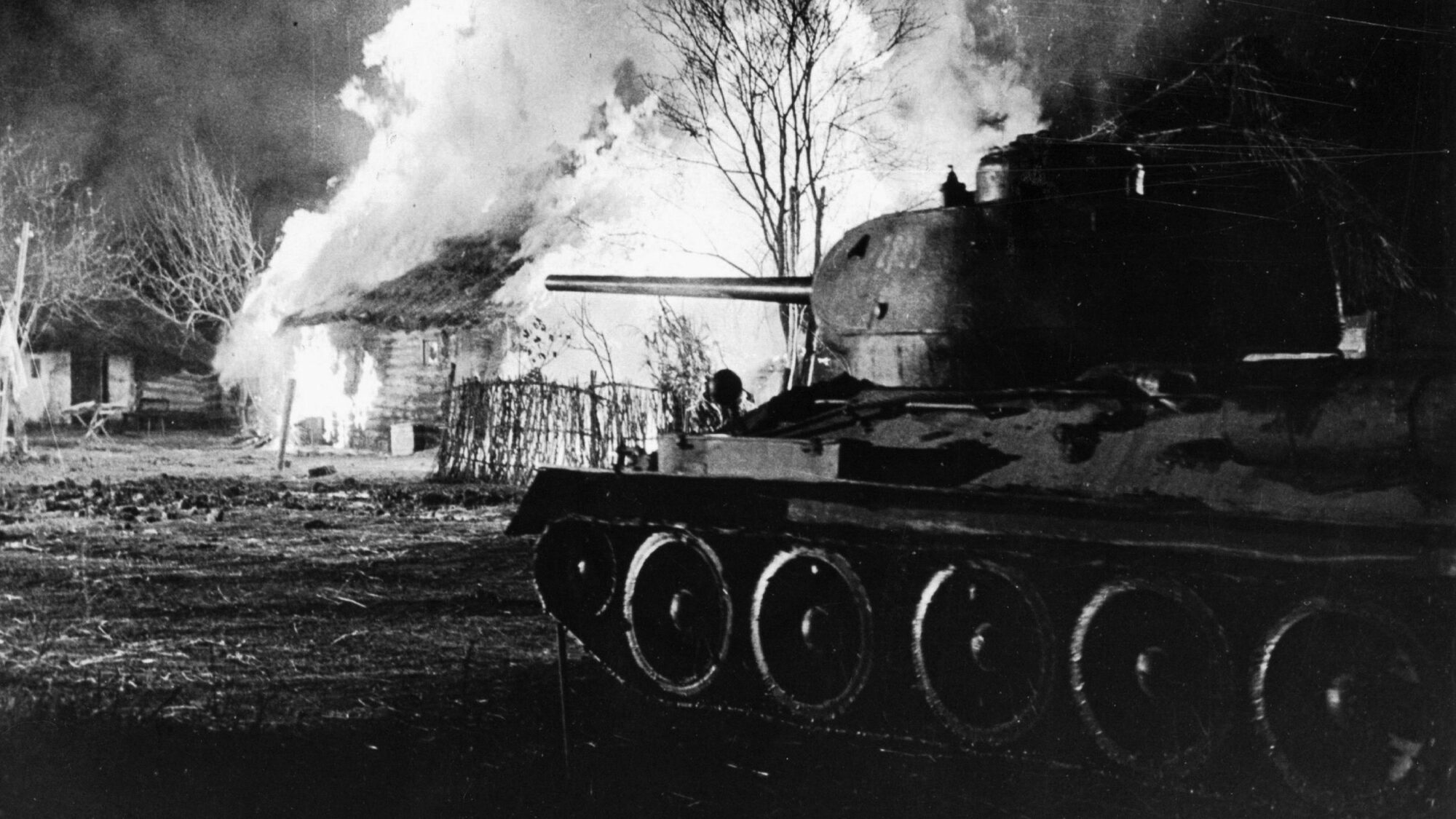
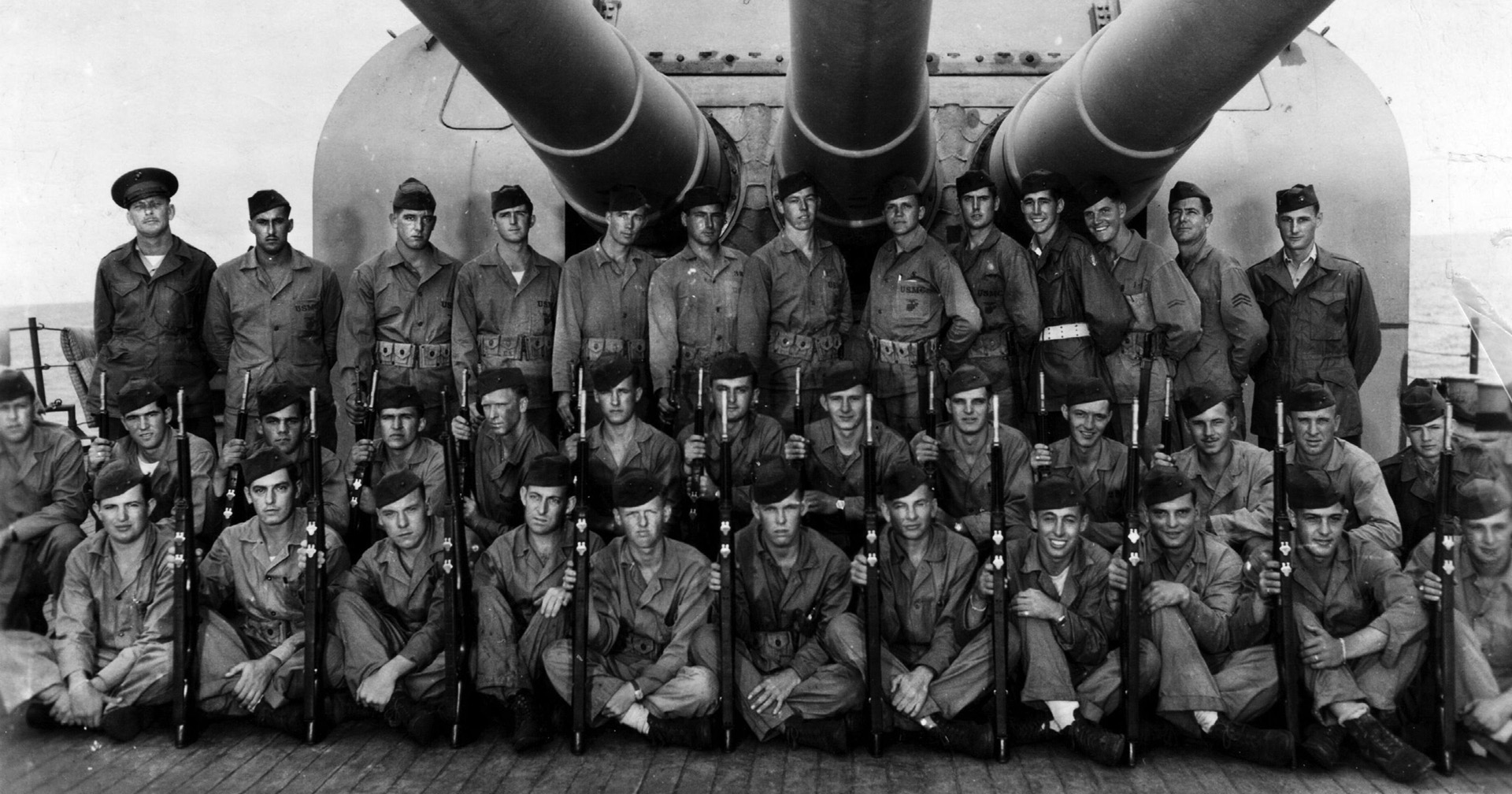
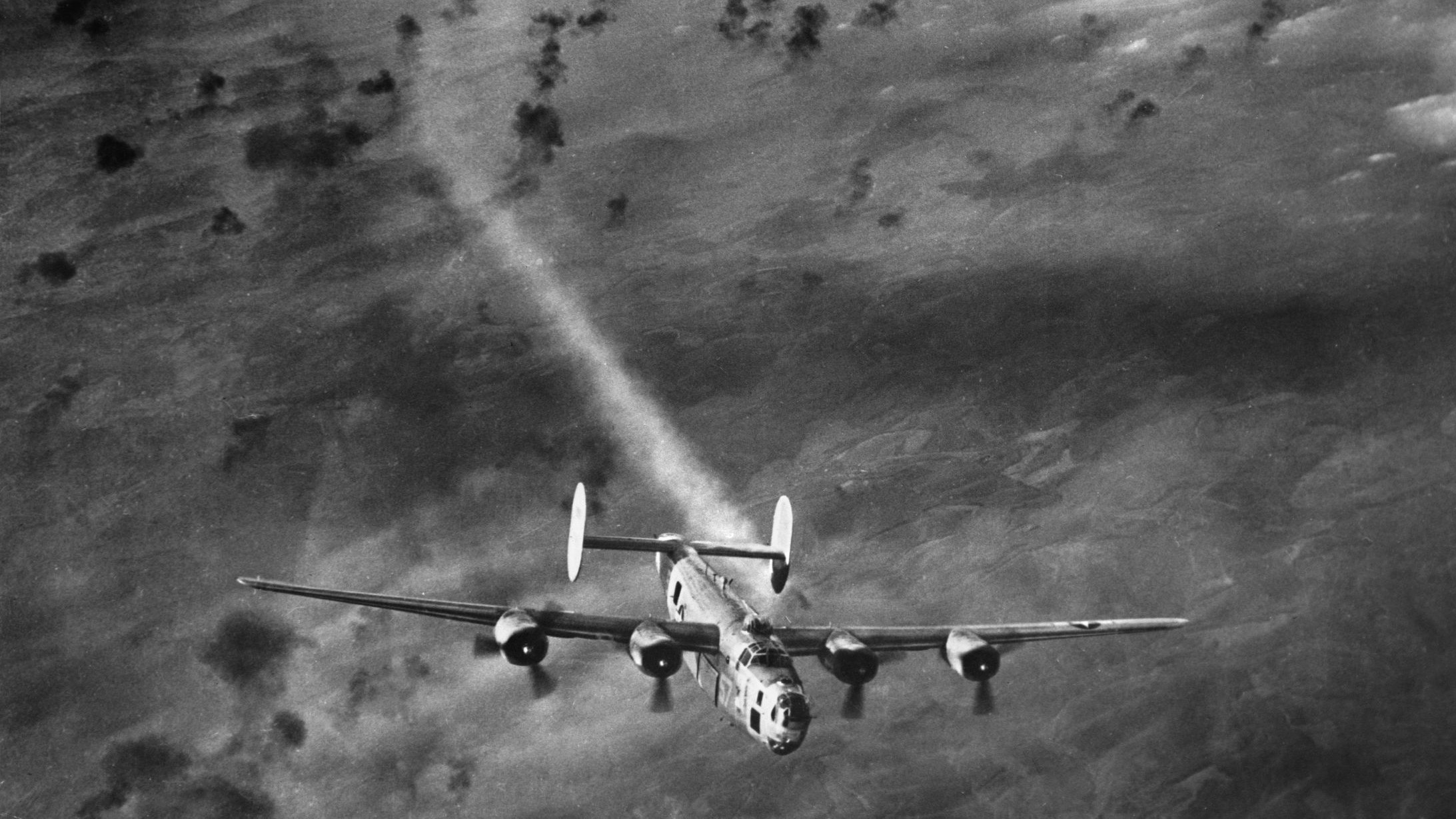
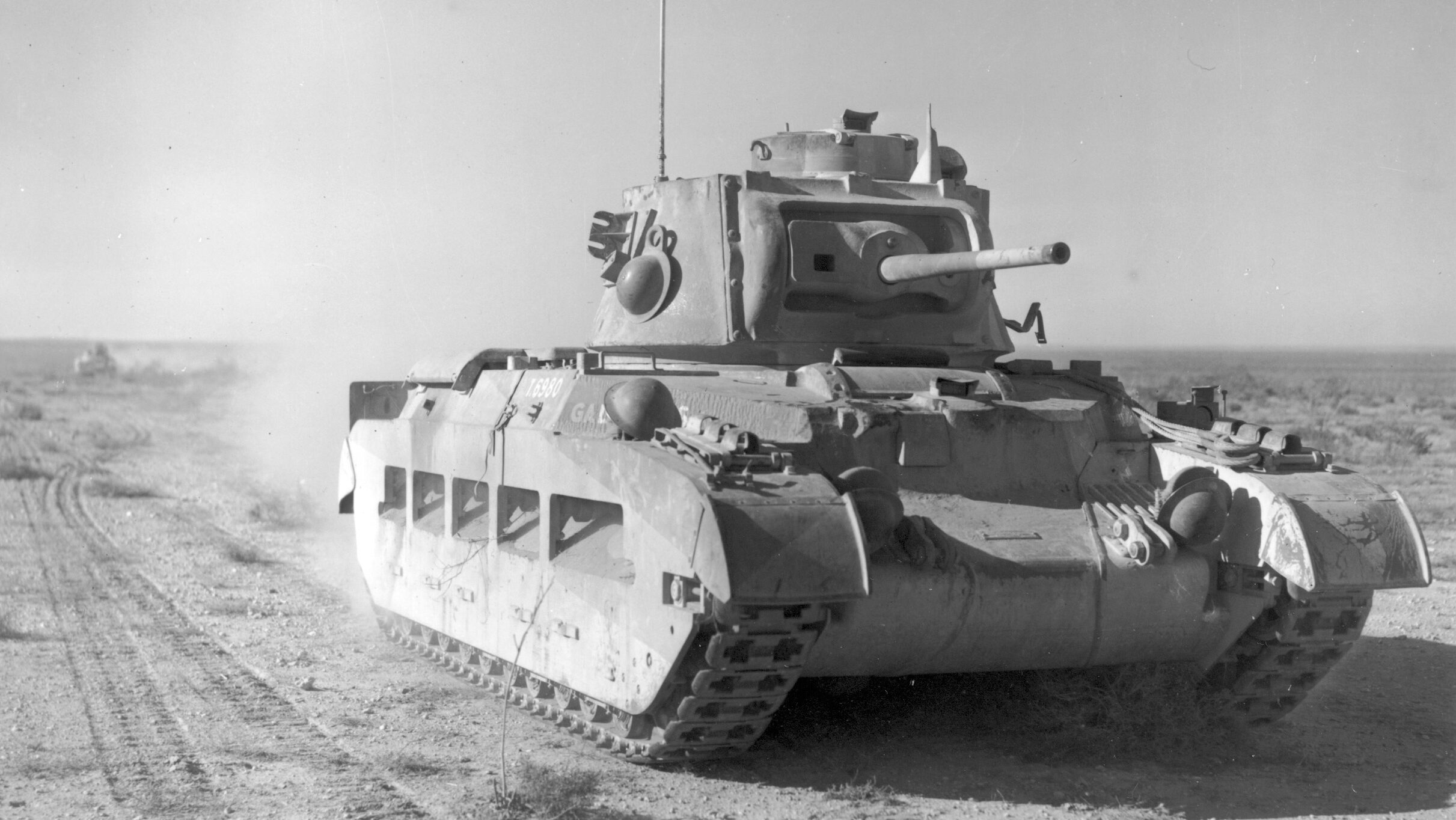
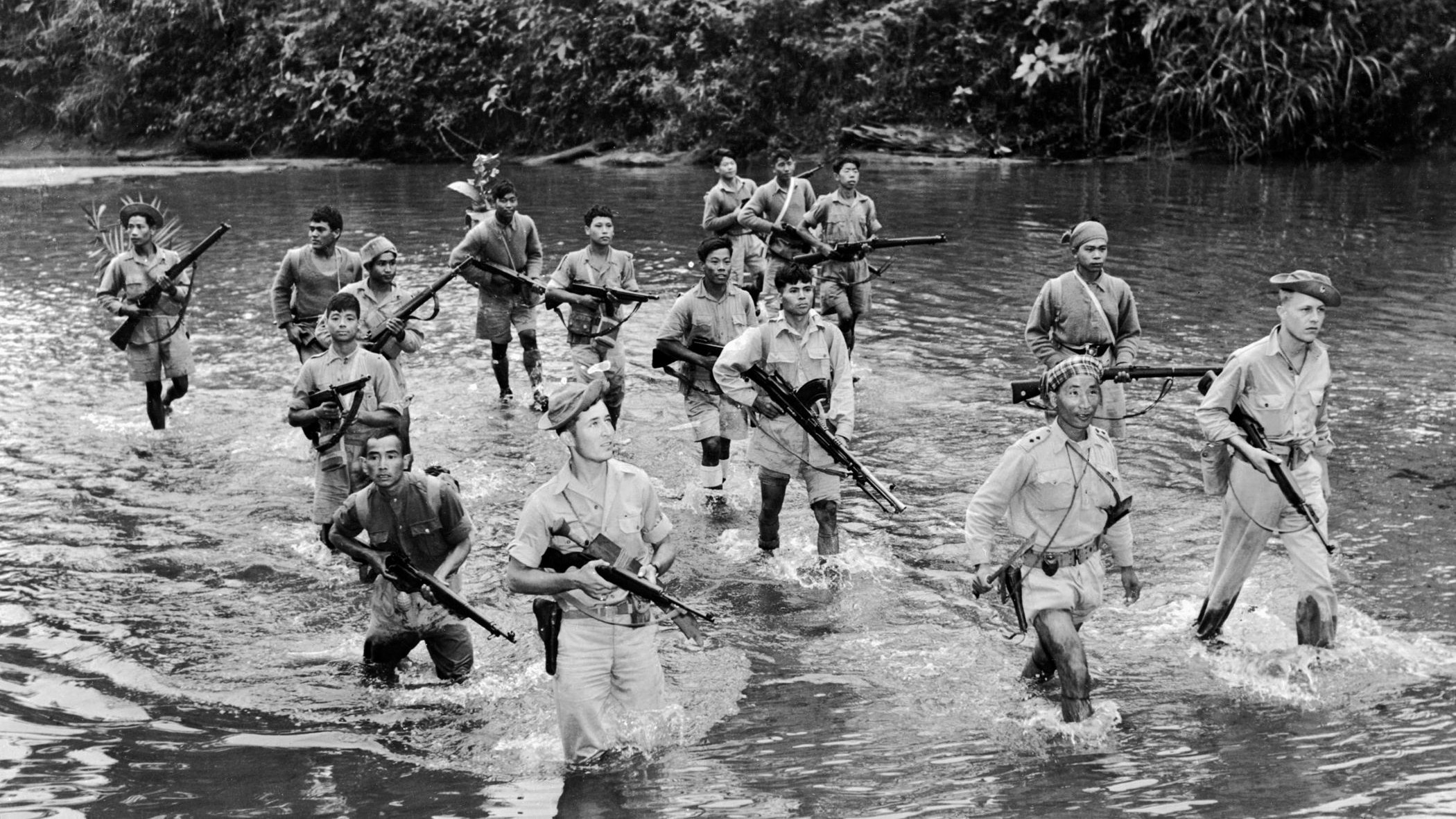
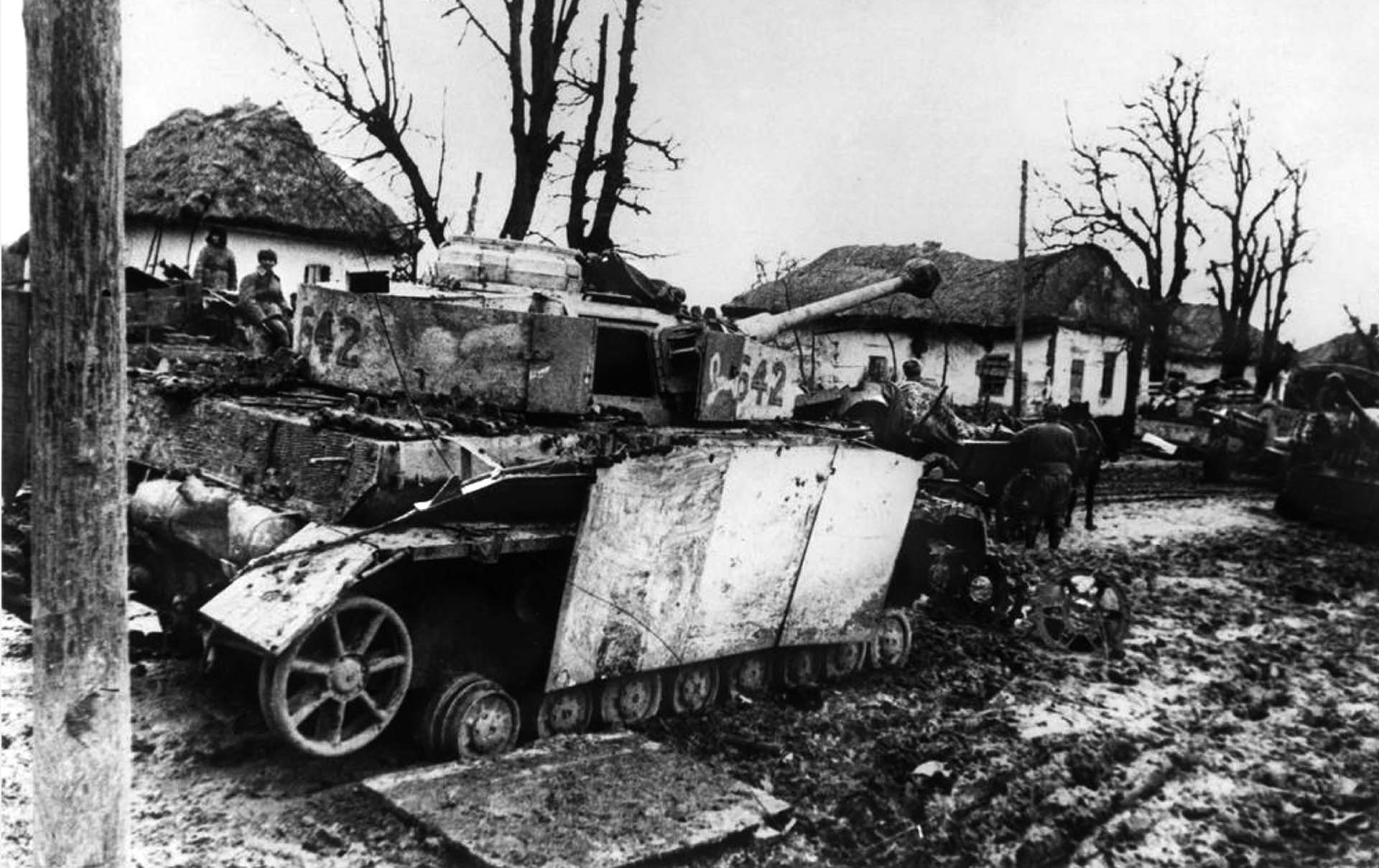
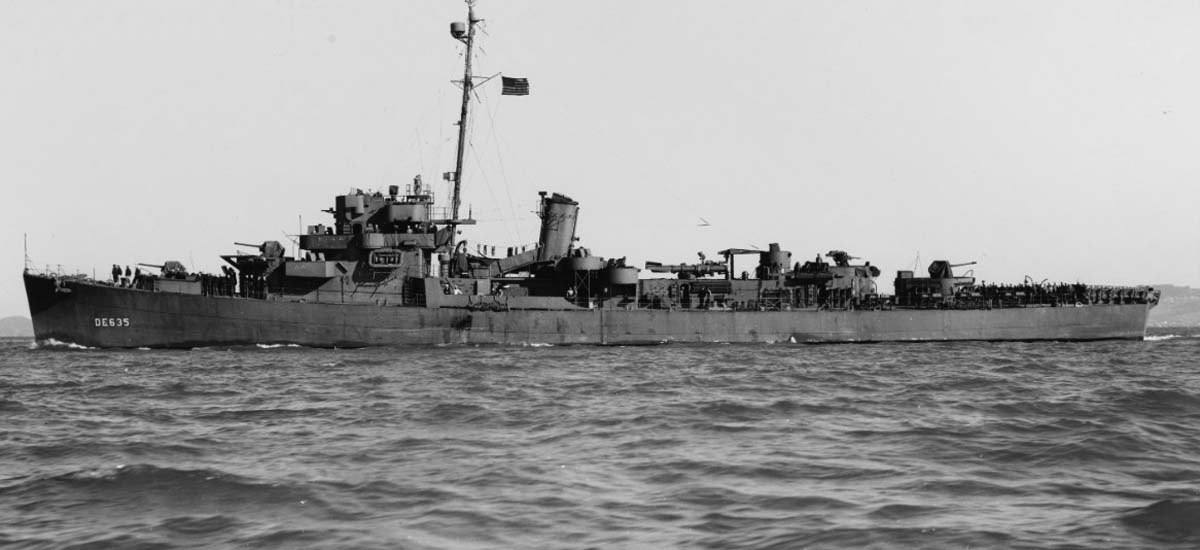
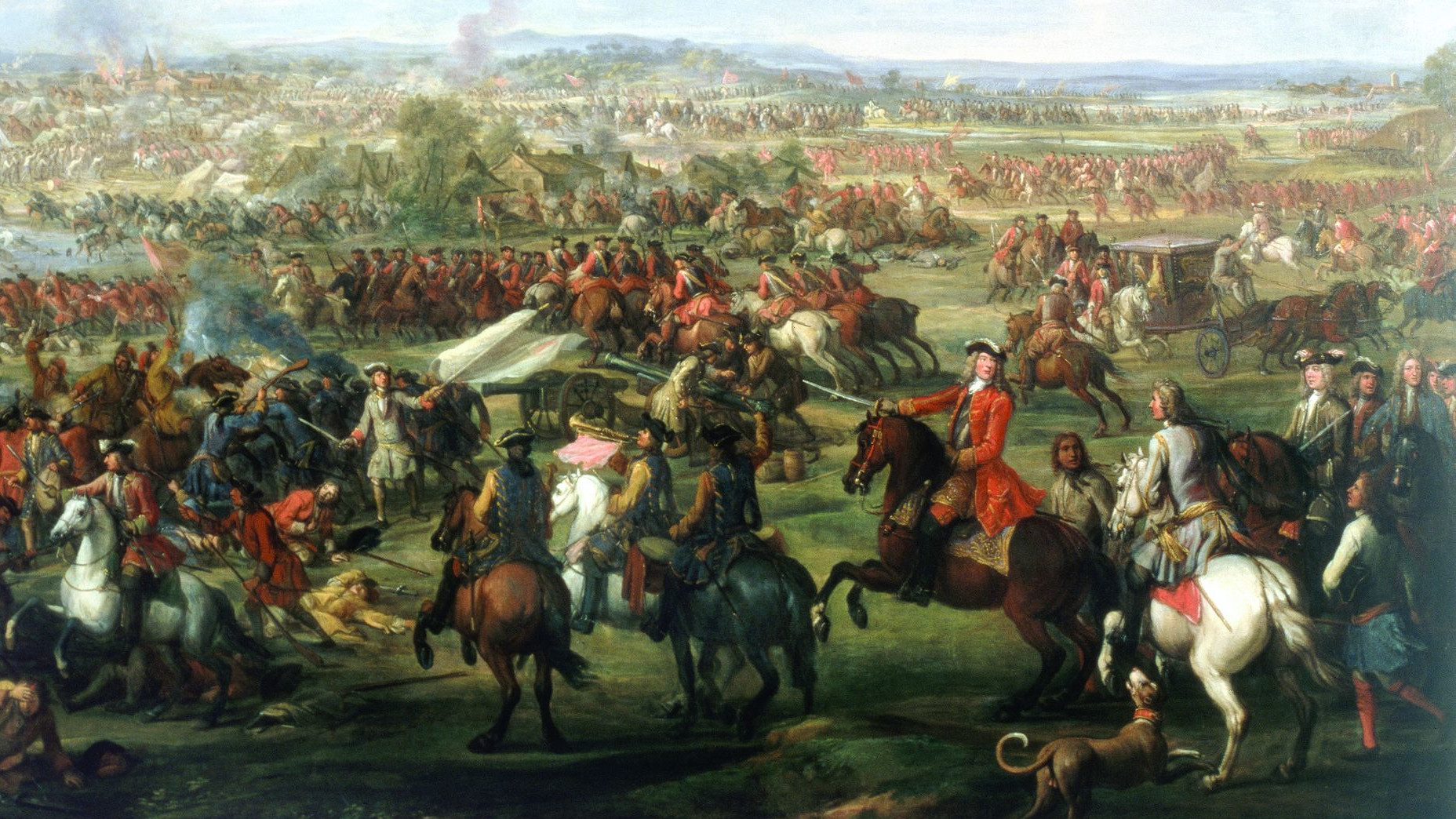
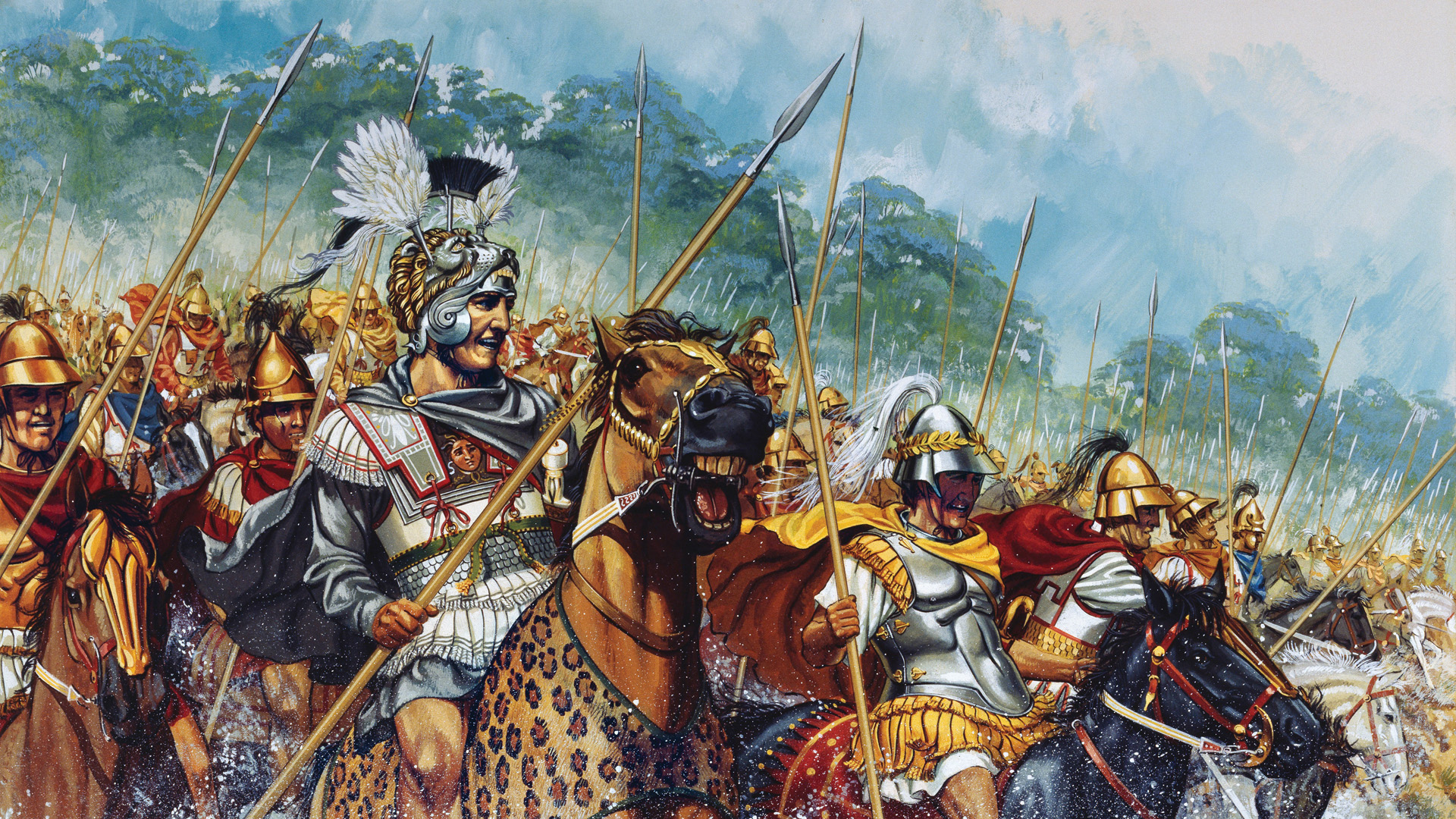
In the first picture the Soviet soldier is laying on a sponson of a US-made early-model M3 light tank. The sponsons containing machine guns were deleted in later models. In the distance appear to be US-made M3 Grant/Lee medium tanks.